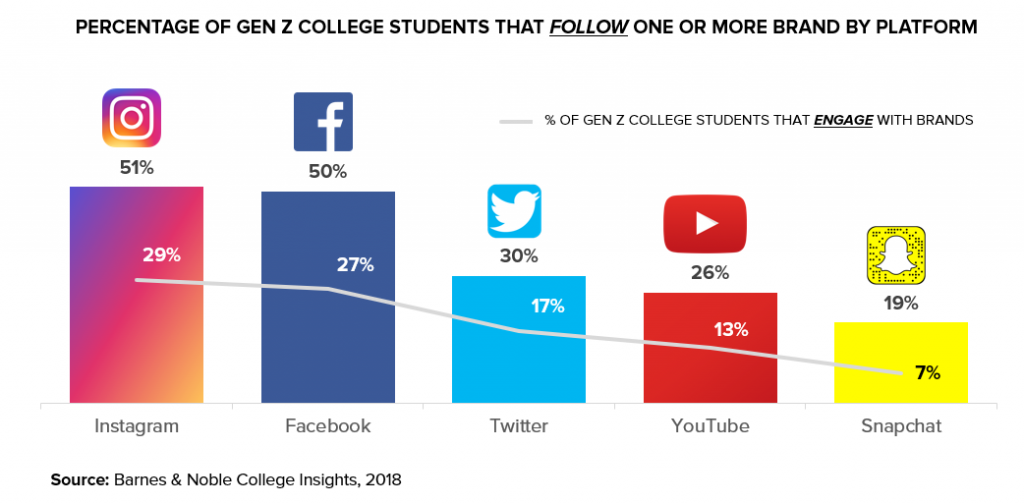
There are many emerging marketing trends. Globalization is one such trend. Marketers are faced with new challenges and opportunities as a result. Changes in technology are another trend in marketing. Innovations in ICT have opened new avenues for marketing and created a multitude of channels. Direct marketing is a good example of this. There are many traditional marketing methods, including direct mail, telephone, catalogue, and email. Direct mail is a powerful tool for targeting consumers.
Shoppable posts
Shoppable Instagram posts are essential elements of any marketing campaign. They do not interrupt the consumer's flow, but rather inspire them and educate them about a brand. This direct communication increases consumers' loyalty and trust in brands. Aside from that, shoppable posts are the next big thing in content marketing. Here are some tips to help you make your marketing campaigns more efficient with shoppable content:
IoT devices
IoT is driving a new wave in marketing opportunities. The potential for these new technologies is enormous, even though we aren't yet fully understanding their impact. IoT devices allow marketers to reach a larger audience and get to know their consumers better. A smart lightbulb can detect the time a person goes to sleep and determine when it is. This information could be used for targeted advertising about products that can help people sleep. Malibu Gin, a brand that makes Malibu Gin, uses connected bottles for promotion. IoT advertising has the potential to revolutionize the advertising industry in ways we cannot yet imagine. Privacy issues should also be considered.

Print on Demand
For those who want to create their own print-on-demand products, there are several ways to reach your audience. Before you start, it is important to identify your niche and pick products that will appeal. If you are an artist for instance, you could make a line of custom swimwear or prints to sell to customers. You might be able to create different types of ads through your social media account. These ads can spread the word about your print-on-demand product.
Customer experience
With 5.1 billion mobile users worldwide and 1.5 billion IoT devices expected to have a cellular connection by 2022, it's no wonder that customer experience (CX) has become an emerging trend in marketing. The pace at which consumer needs are changing is what is changing. To keep up with consumer demands, brands must be more innovative by 2022. The future of CX rests in technology.
Machine learning
Machine Learning, an application of machine learning in digital marketing is one the most useful new tools for businesses. In this age of data, personalized communication is critical. Machine Learning makes it possible for marketers to create content that appeals a wide variety of customer types. Netflix and other companies have used the technology to personalize user experiences. This will ultimately improve customer satisfaction and convert rates.

Targeting locally
For local businesses, targeting locally is important to reach the biggest audience possible. Targeting local customers will allow you to attract people who are able to drive to your business and order delivery from it. You must first know the demographics in your area so you can communicate your benefits to them. These are some tips to help you get started:
FAQ
How can I measure success with content marketing?
There are many methods to determine the effectiveness and efficiency of your content marketing strategy.
Google Analytics is a great tool for measuring traffic. This tool will allow you to see from where your targeted traffic comes and the pages they visit most often.
It also tells you how long each visitor stays on your site before leaving.
This data can be used to improve content to attract people's interest and keep them engaged for longer durations.
This is another way to determine the success rate of your content-marketing efforts.
What value do my new subscribers receive from my email bulletins? What proportion of my mailing list has become paying members? How many people have clicked through on my landing site? Do those who click through convert at higher rates than others?
These are all important metrics to track, monitor, and report on over time.
A third great way to measure the success of content marketing is to count how many people share your content through social media.
Start now if you don't already. It could mean the difference between being seen and unseen in your industry!
How much should content marketing cost?
It depends on how many leads your company wants to generate. Depending on industry, the average lead cost is between $5-$10. We spent $20 per lead when we started our business. Today, we spend an average of $6-7 per lead.
How much does content marketing cost?
The price of content marketing varies depending on whether you're looking for an outsourced solution or you're going to handle everything yourself. Outsourcing content market services is often cheaper than hiring fulltime employees. This allows you to scale quickly, when you need it.
According to HubSpot research, outsourcing content production costs around $5 per lead generated (for B2B companies) compared to $22 per lead generated (for consumer brands).
There are many web resources that offer free content marketing tools, which you can use to create compelling content that converts.
You have many options to optimize content for search engines such as Google and Bing. You have the option to write original articles or guest post on blogs. You can also curate content from different websites and reuse existing materials.
If you want to self-produce content, you will need to learn how you can create great content. Producing content will become relatively simple once you've mastered it.
It is possible to start with simple landing pages created using WordPress, and then build your site. This way, you can build a portfolio over time.
Statistics
- Measure your goals with a progress indicator of 0-100%. Make your goals collaborative and transparent (semrush.com)
- We found that 40% of businesses don't have a documented strategy yet. (semrush.com)
- According to research compiled by Coschedule: Companies that publish 16+ blog posts a month get as much as 3.5x as much traffic as those that publish 0-4 posts a month. (criteo.com)
- Out of the 1,500 marketers we surveyed for our State of Content Marketing report, 78% who felt their content marketing strategy was exceptionally effective in 2021 had documented their strategy. (semrush.com)
- An example of an overarching goal could be: "In 2022, we want to achieve a 20% increase in revenue created by organic content and generate 15,000 MQLs with a budget of $30,000." (semrush.com)
- Progress indicators (0–100%) allow each team member to see how attainable each goal is and understand what remains to be accomplished. (semrush.com)
- Seventy-two percent business to business (B2B) (mailchimp.com)
- According to our research, 65% of companies with very successful content marketing in 2021 ran content audits at least twice a year. (semrush.com)
External Links
How To
How can I create a content market strategy?
First, you need to understand what type of content you are going to create for clients. Once you have established this, it is time for content creation. This could mean creating an editorial calendar and planning the source of these content. Content should always serve a purpose. It doesn't matter if it's blog posts, social media updates, e-books, or anything else, but they should all serve a single goal.
Once you decide what content type you want to produce it's time to discover who your target market really is. Which market are they most interested in and what is their motivation for buying the content you offer?
Next, you need to identify your target market. Then, find ways to communicate with them. You can connect with people through social media, but there are other options available, including podcasts, videos, and webinars.
After you have determined how you will communicate with the market, the next step to take is to determine what topics and types content you want. This will help you to understand why you are writing the content. What problem is it solving? Is it useful? Is it going to make their lives easier?
Now that we know what type of content we write, it is time to determine what you want. Are you looking to share information in your industry? On current events? Concerning specific products and/or services? The answer to this question defines your focus.
Finally, after answering all those questions, it's the right time to combine everything in one package.
It is important to make sure that each piece of content you create serves its intended purpose. You don't want anyone to waste their time and energy so make sure you build quality into all aspects of your content.
It is important to remember that content marketing has many parts.